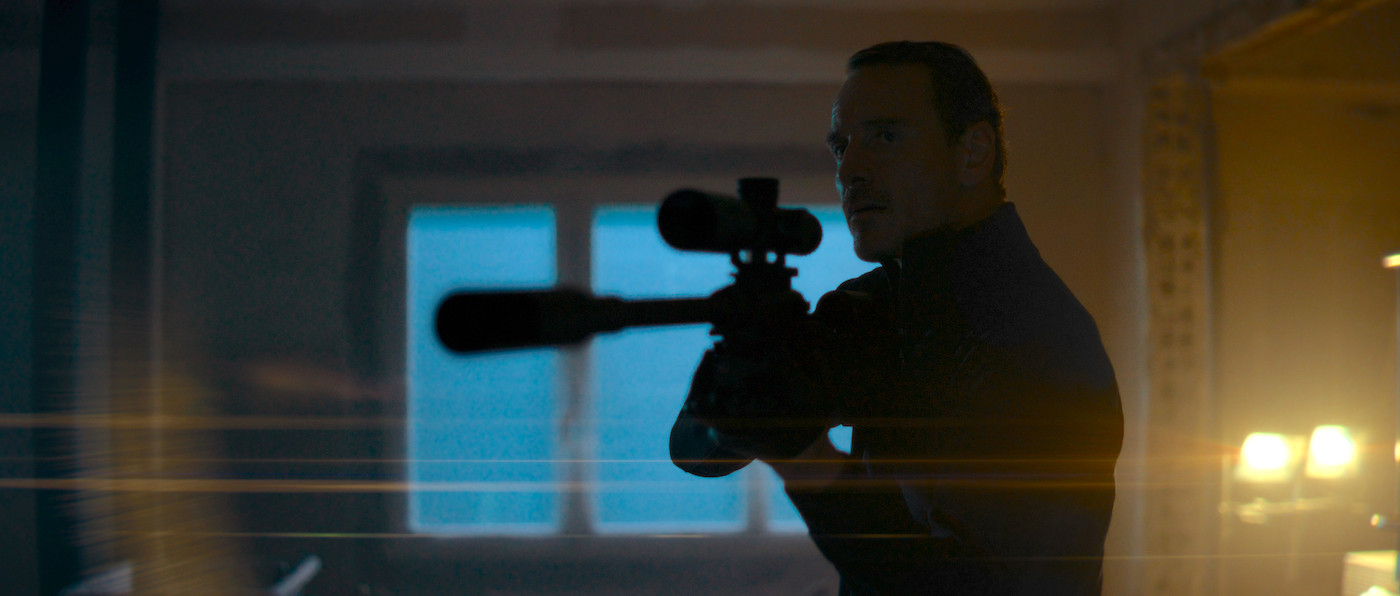Oscar-winner Erik Messerschmidt, ASC, draws a bead on the mind of an assassin in David Fincher’s The Killer
by Kevin Martin / Screengrabs Courtesy of Netflix
Consider this promotional material for the 1969 assassin-at-a-crossroads film Hard Contract: “Everything they do is 97 percent control and 3 percent emotion.” Compare that with the mantra from the nameless lead character in The Killer, director David Fincher’s newest feature for Netflix, shot by Oscar-winner Erik Messerschmidt, ASC. “Stick to your plan. Anticipate, don’t improvise. Trust no one. Never yield an advantage. Fight only the battle you’re paid to fight.”
It sounds pretty much the same, right? Both help illustrate the heart of a broad subgenre of films that includes Anton Corbijn’s The American (shot by Martin Ruhe, ASC), the aforementioned Hard Contract (shot by Jack Hildyard, BSC), The Eiger Sanction (shot by Frank Stanley, ASC, former IATSE Local 659 president) and Fred Zinnemann’s The Day of the Jackal (shot by Jean Tournier.) The common locus revolves around the assassin as a high-functioning sociopath, able to operate effortlessly in various circles without being found out. Given the inherent complexity of such a character type, it is easy to see how Fincher was able to attract Michael Fassbender to take the lead role.
Derived from a long-running graphic novel series by author Alexis “Matz” Nolent, The Killer had been in gestation by Fincher for close to fifteen years. Depicting a murder-for-hire gone awry and its aftermath, the film is viewed through the eye of a seasoned assassin (Fassbender), who now finds himself a target and must seek out not only his erstwhile employers but also those they have deployed against him.
Messerschmidt’s history with Fincher began as Chief Lighting Technician on Gone Girl [ICG Magazine October 2014] before going on to shoot his Mindhunter series and then, in 2021, winning the Oscar for Mank. Messerschmidt had also shot episodes of Fargo, Legion and Raised by Wolves, and, more recently, the WWII aerial epic Devotion [ICG Magazine December 2022]. “What I initially found interesting about the script was how it is almost wholly absent of dialog,” Messerschmidt describes. “There is a significant amount of voice-over, a lot of which was present in the first script, but very little is spoken on screen – so in a sense, it’s like a silent film. This meant the way we told the story with the camera was that much more important. It’s an adaptation of a graphic novel, which are told in a similar way. I was fascinated by that kind of challenge.”
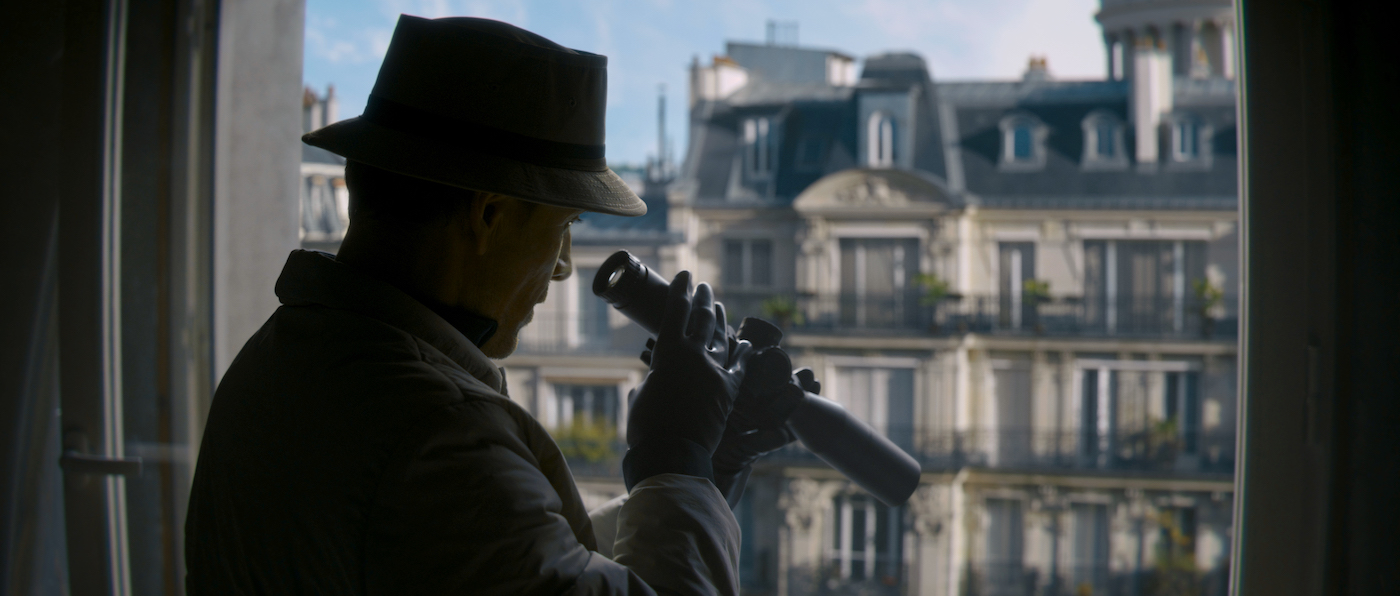
Like Fincher’s protagonist in Fight Club (shot by Jeff Cronenweth, ASC), The Killer’s lead character proves to be something of an unreliable narrator at times. “The story we tell with the camera is sometimes different from what the audience hears in voice-over,” adds Messerschmidt. “So, we were precise with choosing our angles and camera movement to support our character’s headspace. The killer has a mantra he repeats to himself that he uses as a personal affirmation, and slowly over the film he seems that he is contradicting it with his actions. In a way, we see him progress from having the mantra as a form of self-validation to the point he seems to question his ‘workflow,’ if you will. Not many movies you’re going to see that revolve around the fallacy of self-confidence!”
Fincher had his DP rewatch Jean-Pierre Melville’s Le Samouraï (shot by Henri Decae), a 1967 classic featuring Alain Delon as a too-cool-for-school contract killer. “We looked at it, but as an abstract reference,” Messerschmidt observes. “David liked the cold tone, and there was nihilism at the heart of that character, which is an oversimplification. Some of our film’s style comes more from the graphic novel in terms of composition and staging.
“The rest of the film’s style – much of the tone and palette – came out of our locations,” he continues. “David and I went on a series of scouts and the movie revealed itself, rather than us imposing our ideas on the various sites. It birthed itself in front of us, and then once we had homed in on these choices, we had to figure out how to make each one distinctive, yet remain cohesive with the others.”
Another recurring collaborator in Fincher’s work has been Production Designer Donald Graham Burt, of whom Messerschmidt notes, “When I do a movie with David, I spend the vast majority of prep in Don’s office. We’re in constant conversation, discussing the aesthetics, which soon turns into logistical/practical aspects revolving around sightlines and field of view. David is such a good communicator about his intentions and needs, we would go off and work up solutions for those intentions that we could then present.”
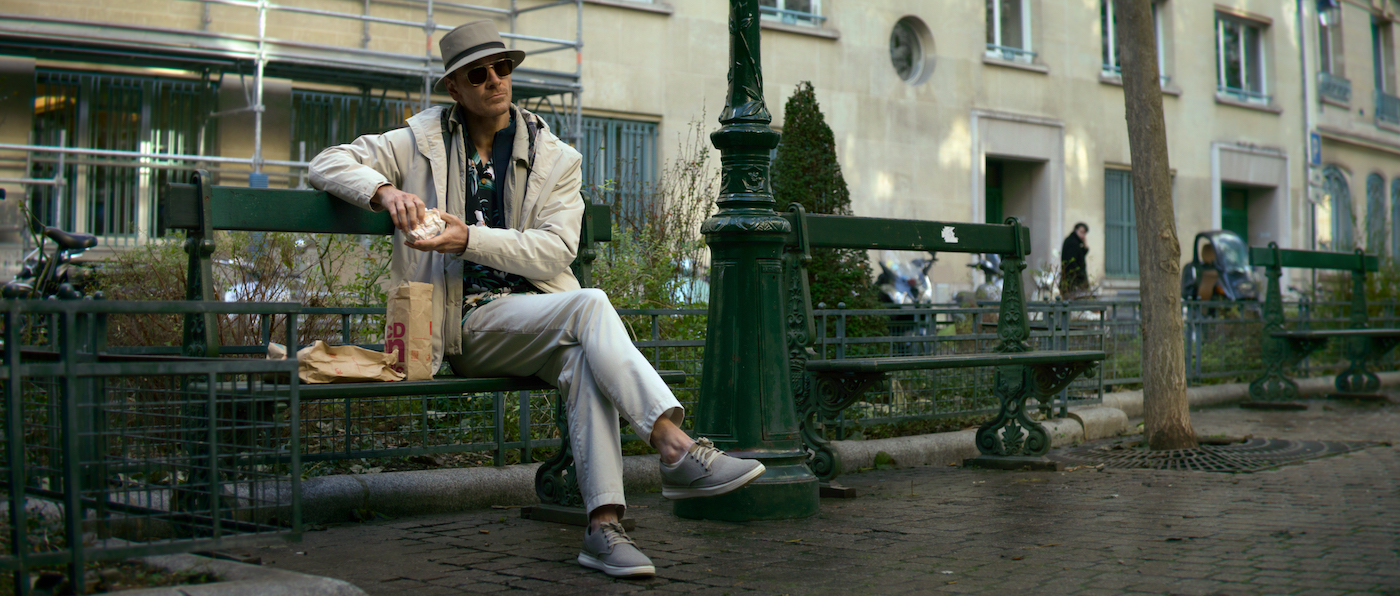
Fincher has been a staunch user of RED’s camera systems over the years, and this continued with The Killer, which marked his first use of their newest unit. “The RED V-RAPTOR [8K W and XL] addressed some color issues we had experienced in the past,” says Messerschmidt, “plus it was small enough to go anywhere and was a good match with the KOMODO, which we also used. We also changed up by going 2.35, as scope seemed more appropriate given our location work and many of the shots featuring the killer and his prey together in the frame.”
A-Camera 1st AC Alex Scott was afforded several weeks of prep at Keslow Camera, readying ten cameras for Paris and shipping twelve cameras for plate views down to the Dominican Republic. “There was only limited second-unit work,” Scott reports. “For driving shots in the DR and a splinter unit for New Orleans [DP’d by Tucker Korte]. The plate cameras had full-frame Sigma Zooms. They determined the necessary angles, and then we’d measure things out with the corresponding vehicle and a stand-in on stage in prep so the plate camera could match our notes.”
The globetrotting scope of The Killer tracks with other contract killer stories. As Messerschmidt notes: “The movie is told in chapters, with the character in a different locale each time, progressing from Paris to the DR, Florida, Chicago and New York City. Perhaps sixty or seventy percent of the interiors were shot on stage in New Orleans.” New Orleans also stood in for Florida, with St. Charles, Illinois filling in for N.Y.C. scenes. Shooting finished in L.A., where additional shooting was done months later.
“The tone and visual aesthetic was established and maintained on the set,” adds Messerschmidt. “We’ve had the same post supervisor and same colorist [Eric Weidt] for some eight years, and have developed a very streamlined color-management workflow on set: a single show LUT, no CDL’s, no LiveGrade. We monitored in HDR on-set with Sony 17-inch monitors and had HD dailies – editorial had HDR as well – in DCI-P3 and Dolby PQ Gamma.
“We had some abstract conversations about what these various parts of different countries looked like and felt like,” he elaborates. “David was emphatic that the audience experience each one as a discrete and different environment. To me, Paris always feels cool and blue, especially at night and even in summer. That cool shadow, yellow highlight look was a big part of the night work there, and it developed from stills we took while scouting.”
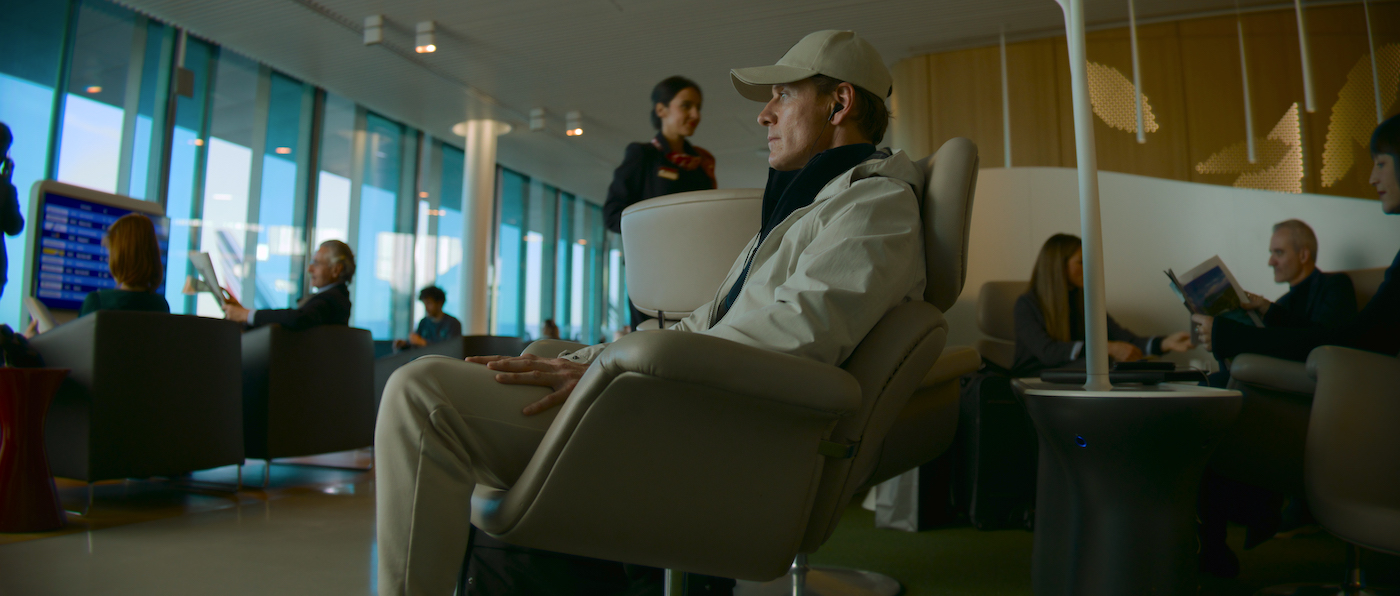
The film begins in the City of Lights as the Killer awaits the appearance of his target. “That whole first section of the film, when he is waiting to make a kill and watching for his prey, made for great opportunities, both with composition and storytelling,” Messerschmidt observes. “The film is very much about point of view, à la Hitchcock’s Rear Window. We’re [looking on] in a voyeuristic way when we’re over his shoulder as he sights in on the target. As we get into his head, we would tend to go very long, with Fujinon Premiere PL zooms [24-180, 75-400]. Two-hundred-millimeter, 300-millimeter, and 400-millimeter lenses. Leitz Summilux-C again, for the third time after Mindhunter and Mank. We pop back and forth between his POV and a more omniscient perspective, as I mentioned, the ‘objective ghost.’ We bring the audience into a space where no one ever gets closer than the character would allow anyone to get to him. In those situations, we’re generally with 29- and 25-millimeter lenses.”
From his nest, the assassin makes a study of the street around the hotel. “A lot of the first 20 minutes that the killer is waiting for his target to show up is exterior POV’s of what he is looking at,” adds Scott. “There were seven cameras looking out from the fifth story of this apartment building and watching the action happening on the street and capturing the same action from other perspectives.”
The ten shooting days in Paris included a motorcycle chase (also shot by first unit), with the opening sequence including location and stage work. “The interiors are complex,” Messerschmidt states. “An interesting mix of stage and location elements were integrated, blending VFX plating in Paris and location work in New Orleans. There was the Killer’s nest as he stakes out the target across the way in a Paris hotel, but the rooms inhabited by the target were done as stage elements in Louisiana and comped into the empty Paris hotel façade. It’s quite an elaborate magic trick, a culmination of four months of shooting and a ton of preplanning.”
The office-cum-sniper’s nest set also made use of playback screens. “The Paris shoot got us some plates, and we played those on these video panels,” reveals Chief Lighting Technician Danny González. “Don Burt did an awesome job, so when our main character is targeting his subject, Michael was able to watch these video panels and get the timing for how his prey is moving around. They worked for lighting as well as for performance-assist.”
González devised an ingenious in-camera solution for interactive lighting as the Killer eyes his prize. “For the scope of his high-powered rifle, we had a prop house build an LED with a light engine on it so it could be animated to create an interactive effect,” he adds. “It gave the impression that the image he saw through the scope was throwing light back onto his eye – a cool and subtle piece of work.”
The sniper’s eyelight is indicative of how, by involving all of his crew in the thought process, Fincher can work so efficiently yet still shoot a large number of takes when he deems it necessary. “There were something like 500 scenes in the movie, so you could have a single line, like ‘the killer watches,’ and that was half-a-day’s shoot,” reports Scott. “But we had 90 shoot days, so we had the time to do it right.”
“David has a sign in his office that says, ‘Fix it in prep,’ notes A-Camera Operator Brian Osmond, SOC. “It’s a great mantra, and [Fincher’s] very big on minimizing surprises. With everybody in that mind space, we can head off problems of not having room to rig and things of that nature. No matter how much you prepare, something will invariably go wrong. But if you’re prepared, then it won’t be a complete surprise, and you’ll be able to deal with it. There are films where you simply aren’t allowed to put a camera in the desired position because the permission wasn’t obtained beforehand, but that tends to not ever happen on a David Fincher project, because we’re always so prepared. David and his team want the crew to know what is going on. They don’t want anybody surprised, because that will impact on his time to make the film with his performers.”
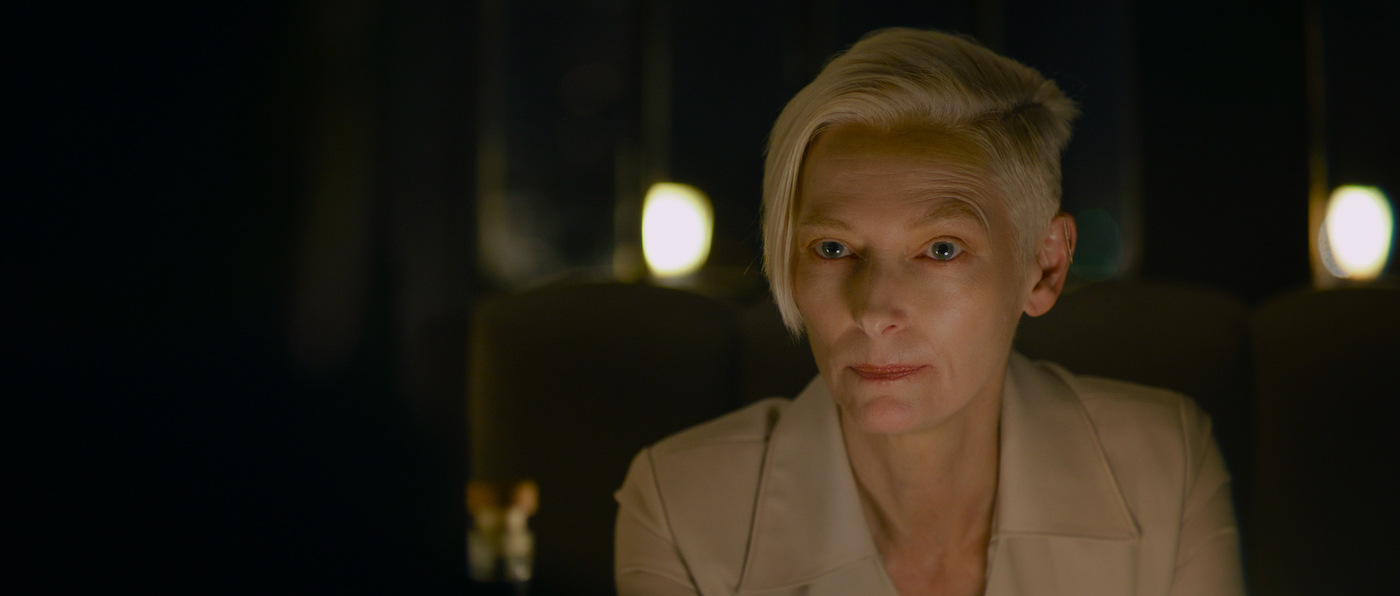
When the action switches to the killer’s home base in the Dominican Republic, a conversation between director and DP led to a surprising innovation. “You probably couldn’t ever sell a desaturated look for the Dominican Republic, but David did get me to speculating when he said it should look humid,” Messerschmidt recalls. “Wouldn’t it be fun to experiment with heavy diffusion? We liked some of our test results, but the look wasn’t quite there in terms of specific control. Light veiling, flare and double reflections made for situations that caused me to be suspicious about relying on something in front of the lens. I’ve had as many if not more unsatisfying experiences with diffusion filtration than positive ones. I find it hard to judge in changing lighting conditions how well the filters are going to work across a whole scene. Whereas addressing these matters after a cut sequence emerges is an ideal time to apply this kind of look.”
Then a solution presented itself. “I stumbled across a plug-in for DaVinci Resolve called Scatter [from Video Village], a diffusion emulator that can be applied in the DI,” Messerschmidt continues. “I sent it to [Eric Weidt] and asked if we could try this out. They were grading in BaseLight but wound up doing a separate pass on Resolve, and it got used at various places throughout the film. I was very pleased with the control we had with the results. You can tone it to the specific shot and render it out as needed, plus you can change it. You can say: ‘See how it looks with BlackMagic ProMist or Glimmer Glass.’ The latter is something that usually works better with a practical physical filter than through an emulation. Being able to art-direct the thing in DI was extraordinary.”
The location offered two distinctly different looks, with city work in Santo Domingo contrasting with the beach feel of the island’s north side. “Working on location, there’s obviously the issue of getting the light in a way that supports the storytelling,” states González. “But there’s also the logistical aspect of what you are permitted to do – which hopefully gets resolved ahead of time. David figures out what he wants to shoot, and we are in the background attending to logistics, making it work for him. If there is a difficulty, we might bump that up the chain and tell him, ‘This might be a big problem.’ Usually we can make things work, sometimes just changing out existing fixtures for our own lamps.
“We’re primarily LED, probably 90 percent,” he continues. “We still use tungsten if there is an in-frame light intended to be incandescent, or if we have a night exterior and just need to light up trees in the background, I will use it there as well. HMI’s for day exterior augmentation. One night parking-lot shoot had plenty of light from the existing units, but we extended that look back with 4K’s deep in the background. David and Erik are very smart and responsible when it comes to these things. If we’re only going to be at a location for a half day or less, then they may elect to do things a little more down-and-dirty to move things along. If we can rig early in the morning, then we can shoot and move on and have a clean-up crew in that evening, so we’re done in one.”
González offers an example of a more elaborate pre-rigging.
“We were at the airport in New Orleans – it’s the old original airport, presently not functional, but they’re in the process of reworking and rebuilding it for some use – for two-and-a-half or three shooting days,” he adds. “Every location we shot at was its own scene, and it would make up maybe ten seconds in the final cut. All of them had to be lit, and there were hundreds of bulbs to switch out. But we had a rigging team get there about a week in advance to address these changeovers, plus set up a data network so we could control the lighting on our shooting days. We pretty much always try to patch all lights over to a lighting console, even on the smallest location.”
The value in such an approach, González shares, is simple: “Speed and efficiency. When we need to bring something down in intensity, or if there is a dimming cue or a color change, this is the best way to keep the day on track. The ability to address all this with my programmer on the fly is tremendous, as opposed to the older way of Erik asking me to do something, which means I have a guy go in there with a ladder, which would have had David freaking out,” he chuckles.
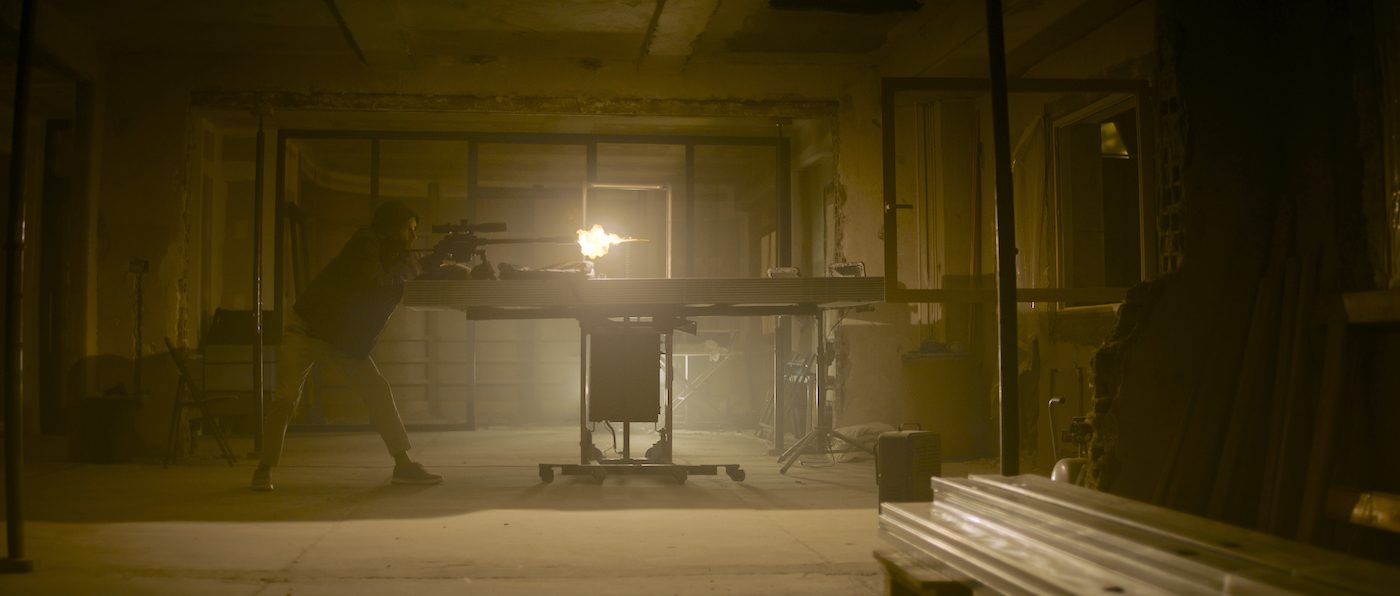
In a way, The Killer’s lead character reflects Fincher’s determination to work efficiently to enable the best results. Messerschmidt says, “the film is very much about precision, control, and process. When Michael’s character is in command of the situation, the camera is in lockstep with him. He and Brian Osmond became ballet partners along with Dolly Grip Dwayne Barr. They were practically connected mechanically in some situations. But when things go sour for the character, and he is not in a place of comfort, the camerawork gets looser and less mechanical, often through handheld work.”
Osmond found the percentage of handheld work surprising given Fincher’s inclination to avoid that route, though he felt fully supported by Scott’s ability to pull focus in tricky situations. “Alex is always thinking about his part of things and considering when might be the perfect moment to go for a focus pull if the person in the foreground makes a certain move,” Osmond shares. “It is more than just ‘the guy is six-two and leaning in slightly,’ it is about contributing to the storytelling. I cannot do the job I do for David and Erik without Dwayne Barr and Alex. Those two guys are so great at what they do.”
Scott finds that over the eight years working with Osmond and Barr they have developed an ability to anticipate that the film’s main character might find admirable. “It’s a treat to have this kind of continuity, and we each understand how things might go if something changes during a particular take,” Scott reflects. “Michael Fassbender was wholly on board with the need to coordinate with us, and he was always very consistent with his movements. We shot a lot of it pretty shallow, with figures silhouette-y as I saw them on my monitor, so pulling focus, especially with all the moving camera and handheld work, was interesting. Just reading the script, I could tell it was going to be a challenge because the assassin was such a perfectionist that we would all have to exhibit that same attention to detail.”
The AC says he learned to pull focus on a 17-inch monitor as Fincher often stood behind him watching the action on the large, calibrated image. “There were occasions when our locations were just too tight, so we also had a 7-inch for those shots,” he adds.” I’ve been using the LightRanger, which was a new tool for David. I talked with Erik about it in the beginning, given the director’s expectations. We had to kind of sell him on that because he was trying to concentrate on the scene and didn’t want the green bars to be distracting for him. I don’t think I could have done the movie as well without it. We might do thirty takes for a given shot, and he wants every single one to be perfect.”
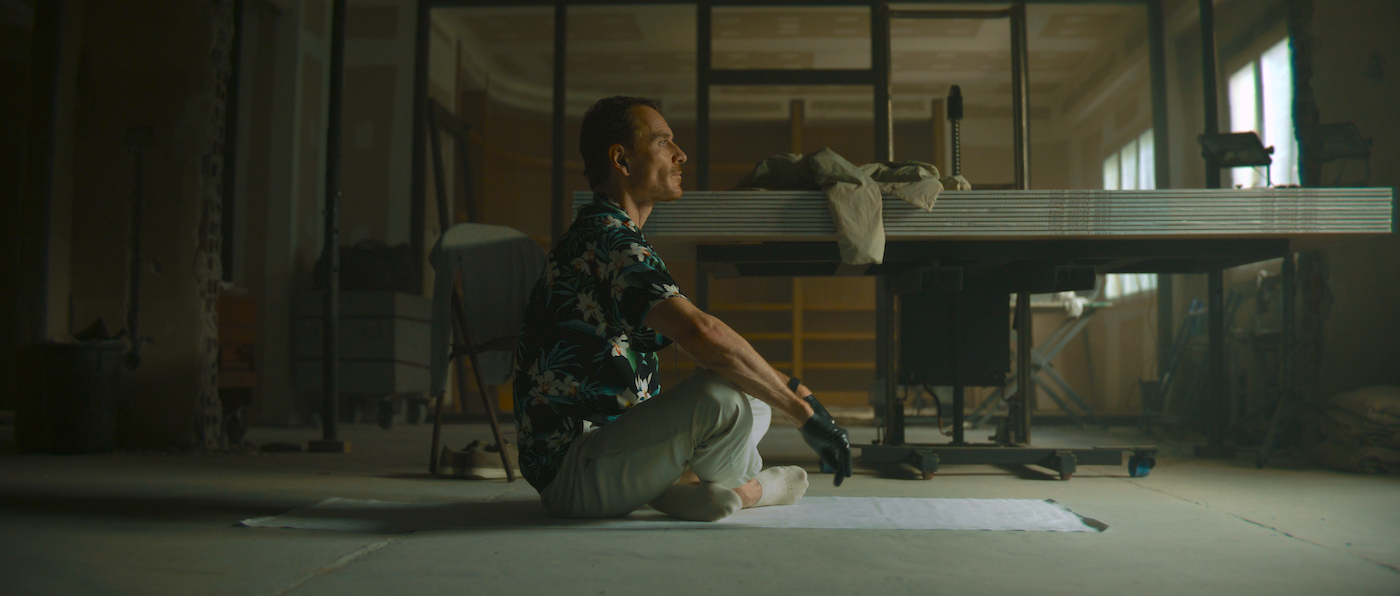
Even with a reputation for technical innovation, Fincher relies mainly on established means when possible. “David and Erik use simpler tools than most people might expect,” offers Osmond. “We use PeeWee dollies and mostly primes, a fluid head. Much of the work is done traditionally – though we do it at the highest level possible. We’re not afraid to get technical – but you’ll only see stabilized heads if that is what we need to get that shot. The last scene in the film was an elaborate dolly shot – it wasn’t a oner in the end, but it did endeavor to tell a lot of the scene – and we had custom dolly track made – the grips getting involved with vendors in bending the track! To make this work, you need to really know the dimensions of the location.”
Another scene that spanned stage and location occurs when the Killer engages with another assassin. “That took more than seven days to shoot, and was a very elaborate fight scene,” Messerschmidt recounts. “We had conversations around how to do this, not wanting to do the classic long-lens handheld disorienting fight coverage that is such a staple of modern American cinema. This idea that the audience will feel the action is more exciting if the visuals are disorienting is …”
Messerschmidt trails off, then continues to explain the battle. “A gun gets lost early on, but then the hand-to-hand takes them all through the house until minutes later when they wind up where they started and the gun is retrieved. David wanted to make sure the audience understood the geography, so they’d realize what he was going for just as he sees it. This involved screen direction, composition, and blocking, worked out with, again, precision – we were giving the audience the knowledge to understand what was going on.”
Extensive stunt-vis and intensive rehearsal were needed to convey the brutality of the extended combat, and Messerschmidt says he felt the results were something they were all proud of. González contributed to the aftermath, which included a Molotov cocktail effect and subsequent fire explosion on the house caused by the Killer.
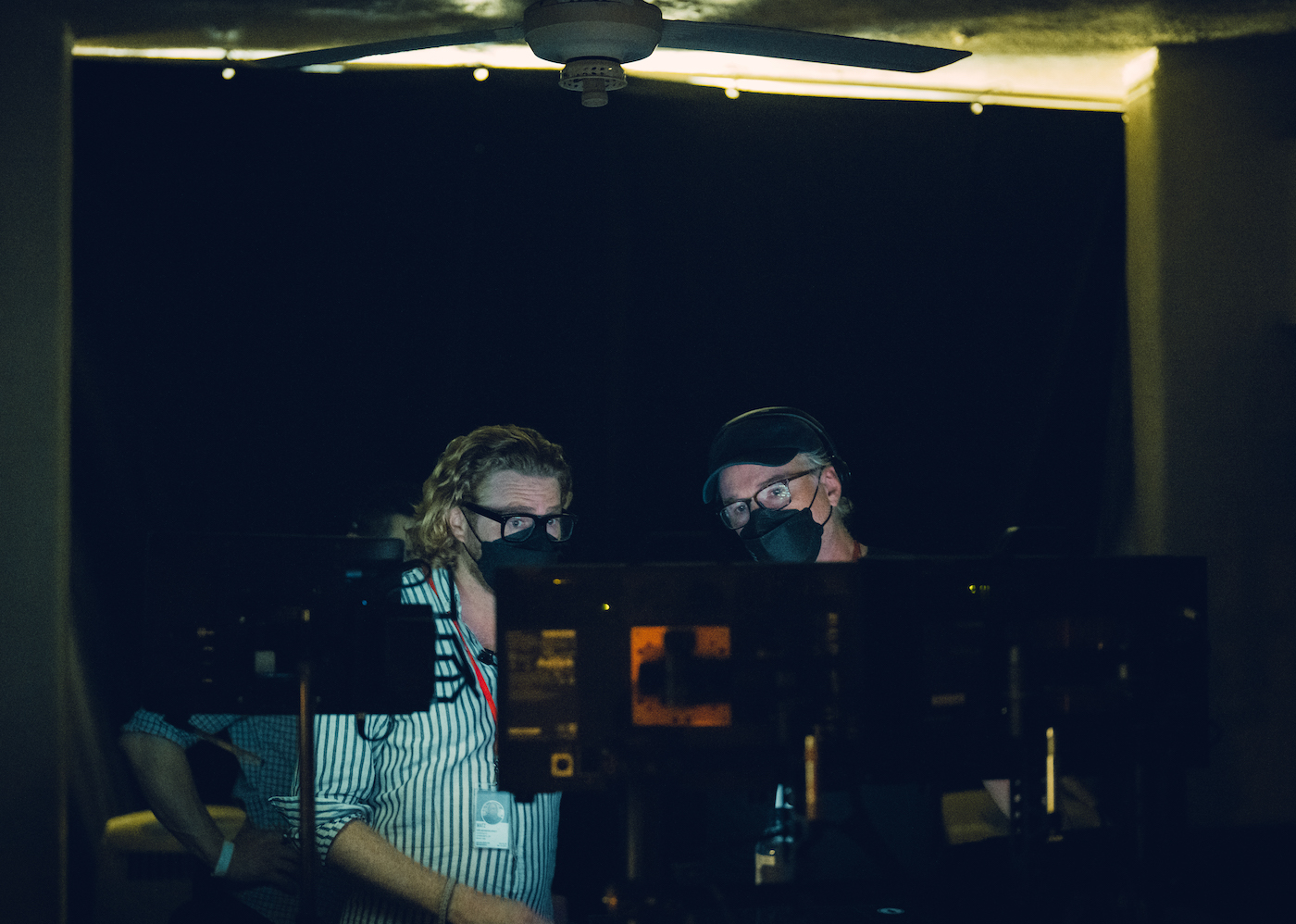
During postproduction, it is typical for post-stabilization to be employed on recent Fincher projects. “That’s to finesse some frames,” Messerschmidt adds. “In this case, we did a lot of post destabilization, because Brian is just too good of an operator, so we needed to screw the work up a little bit. A lot of that is, again, dependent on what emerges in the cut, so you can finesse the levels according to the pitch of the scene. It’s truly an amazing storytelling tool.”
Working with Weidt, Messerschmidt completed the HDR finish first. “In part that is because it is easier to work that way – always easier to condense than to expand in grading,” he relates. “The Dolby Vision/theatrical release offers a wider dynamic range finish than the SDR theatrical. So, we establish our reference points and set the hero version of the film in the picture. We’re not taking the audience to a thousand nits all the time. If anything, the HDR works more on the shadows than the highlights. In the early days of HDR, people started to get obsessed with showing off the image, upping LUT’s, and the pushback from cinematographers was that it might be some kind of technical achievement but doesn’t necessarily look good. Now that we’ve had time with the medium, we have worked out what works well and what doesn’t within the HDR realm.”
“One of the very first things we shot after coming back from the new year,” Scott concludes, “had the Killer waiting to get into an office and counting seconds while watching how long it takes for a door to close. It was a simple hallway set, but with the way David planned and executed it, it will play pretty spectacularly. Even with all the wonderful locations, to me, that little scene felt like such genuine filmmaking.”
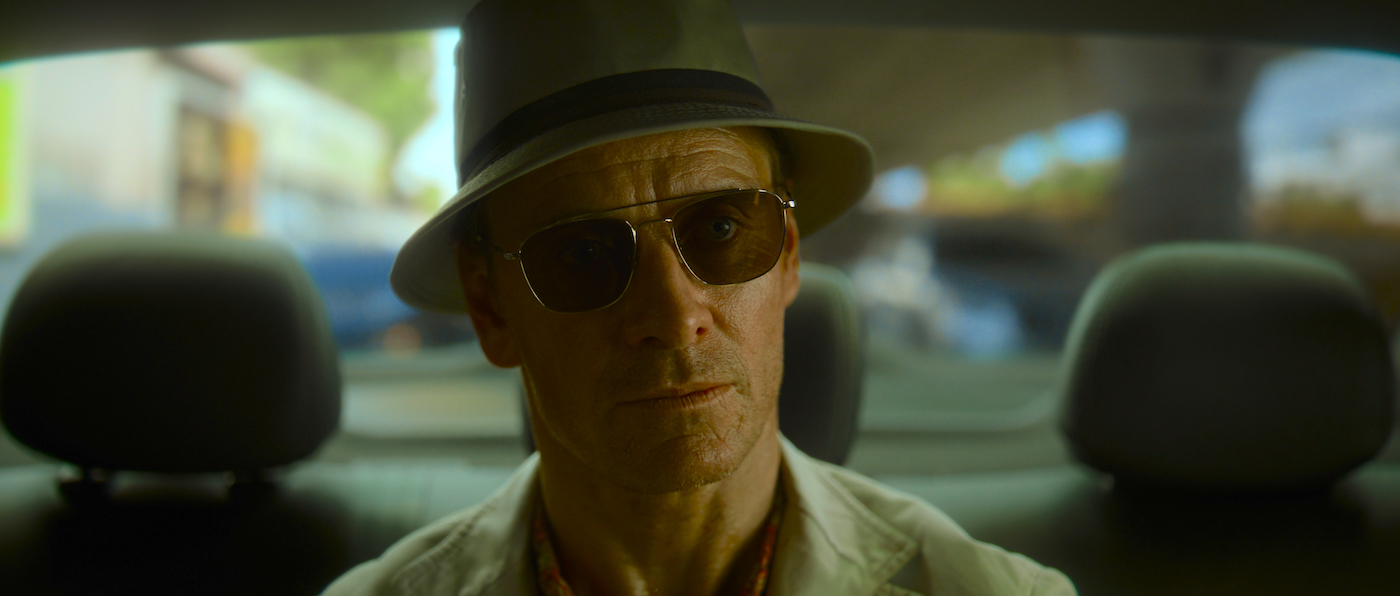
taking the audience to a thousand nits all the time. If anything, the HDR works more on the shadows than the highlights.”
The Killer – Local 600 Camera Team
Director of Photography: Erik Messerschmidt, ASC
A-Camera Operator: Brian S. Osmond, SOC
A-Camera 1st AC: Alex Scott
A-Camera 2nd AC: Jonathan Clark
B-Camera Operator: Mick Froehlich, SOC
B-Camera 1st AC: Brian Wells
B-2nd AC: Matt Gaumer
C-Camera 1st AC: Chris Wittenborn
Second Unit Director of Photography: Tucker Korte
Plate Van Technician: Patrick Moynahan
Additional 1st AC: Dave Edsall
Additional 2nd AC: Liam Doyle
Unit Still Photographer: Miles Crist
